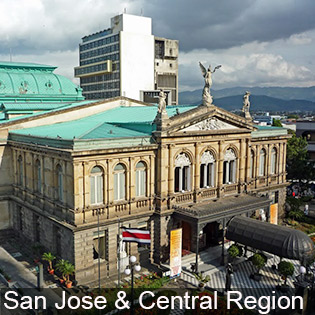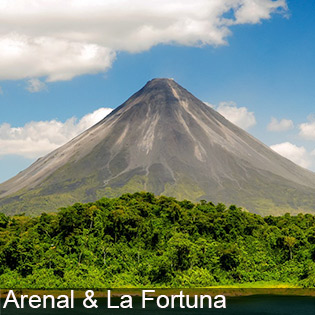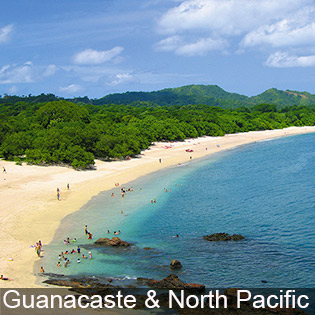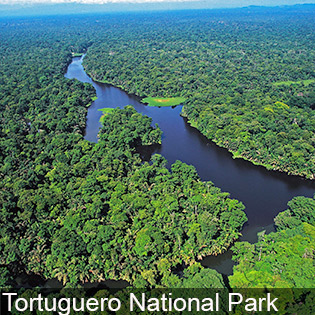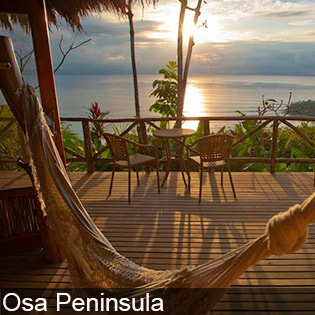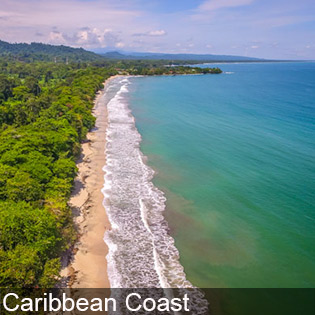COSTA RICA: Region by Region
Welcome to our Region by Region section. This section is intended to provide more details of each county’s regions, highlighting the region’s attributes and points of interest, including what to see, best time to see it; suggested length of stay, and more. Moreover, this section provides the independent traveler the opportunity to consider what cities and regions interest them most. While our Pre-designed tour menu provides a wide range of suggested popular tour programs, the Region by Region sections allows you to custom-design the tour of your choice.
San Jose & Central Region
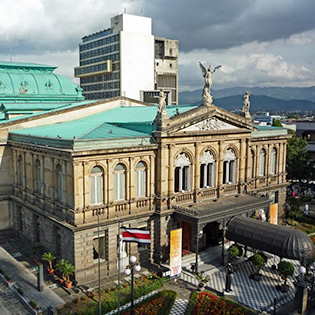
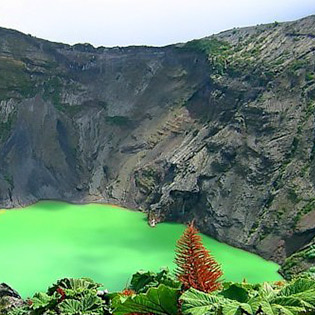
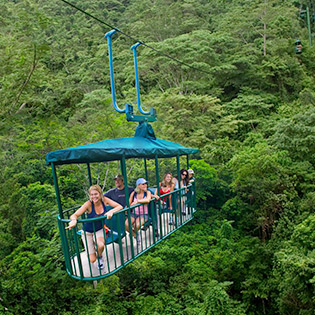
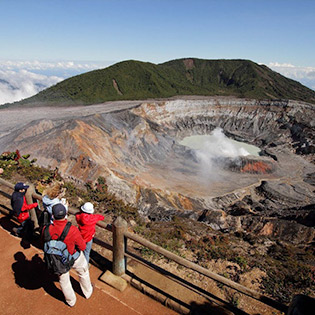
Overview
The Central Valley and Highlands of Costa Rica combine to make one of the most diverse regions of the country. The valley is home to the capital city, San Jose, Costa Rica’s economic, administrative, and political heart with a privileged central location making it a great hub for daily excursions to nearby national parks, volcanoes, coffee farms and river rafting. The serious visitor can enjoy the Jade Museum with over 6,000 pieces, the pre-Columbian Gold Museum’s equally extensive collection of indigenous artifacts, and the National Museum, located in what was the former Bellavista Fortress until Costa Rica abolished its army in 1949. The classic Renaissance-style National Theatre is well worth a visit even when there’s no production on stage. Nightlife is lively and extensive, including casino action. San Jose has two airports: Juan Santamaria International Airport and Pavas National Airport, both located just 15 minutes from downtown.
Recommended Stay
One to three nights
When to go
Costa Rica is a year-round destination. Most people prefer to visit during the dry season (December-May), when days are clear and sunny and rain is practically non-existent. Day temperatures average 80F dropping into the 70s at night. Wet season is characterized by higher temperatures and humidity, clear mornings and heavy afternoon downpours.
Highlights
- The National Theater The National Theatre of Costa Rica is Costa Rica's national theatre, located in the central section of San José. Construction began in 1891, and it opened to the public on 21 October 1897 with a performance of Johann Wolfgang von Goethe's Faus
- Whitewater Rafting: The Pacuare and Reventazon Rivers rank among the world’s best for whitewater rafting.
- Canopy Tours: Aerial Tram in Braulio Carrillo National Park is a popular day trip
- Volcano Tours: Irazu and Poas volcanoes are regularly visited on day tours.
- Coffee Farm Tours Costa Rica is famous for its coffee dating back to the middle of the 19th century the coffee bean has played important social, economic, and even political roles for the country, with an influence that extends unquestionably into today. Tour includes visits to the coffee fields, roasters, and cafés.
- Turrialba is home to some of the best whitewater rafting and canyoning in the world. The emerald green rain and cloud forest covered mountains of Heredia are spectacularly beautiful and home to attractions such as La Paz Waterfall Gardens and Poas Volcano. Areas such as San Gerardo de Dota and San Gerardo de Rivas are surrounded by extraordinary cloud forest, which is prime habitat for hundreds of species of tropical birds. Click below to read more about the diverse Central Region of Costa Rica.
Arenal & La Fortuna
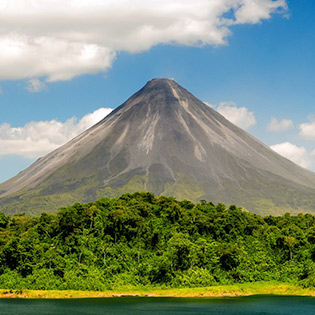
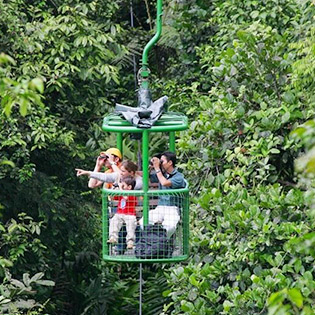
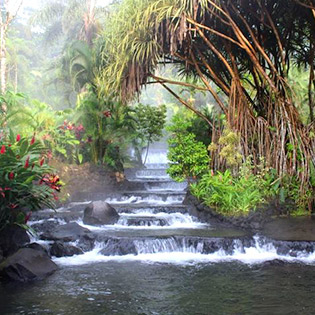

Overview
One of Costa Rica's most popular and notable regions to visit is the Arenal Volcano. This impressive volcano resides within the 29,960-acre Arenal Volcano National Park. Although the volcano entered into a resting phase in 2010 (the eruptions have paused) it’s still a stunning sight towering over the rainforest that surrounds its base. Made up mostly of primary rainforest, the Arenal Volcano National Park encompasses four different life zones and harbors a tremendous amount of flora and fauna and thus offers a wealth of activities – including whitewater rafting, waterfall rappelling, hiking and canopy tours – as well as the friendly town of La Fortuna.
Recommended Stay
Two to four nights
When to go
Arenal presents a varied climate with mean temperatures ranging from 68 to 85F. The region may be visited year ‘round, dry season extends December-April. During wet season, expect warmer temperatures, and frequent afternoon showers.
Highlights
- Rafting: Float the Peñas Blancas River or choose a thrilling whitewater ride on the Toro and Sarapiqui Rivers (Class II-IV)
- Caño Negro Wildlife Refuge: Three different habitats to spot many bird species and mammals.
- Volcano Tours: Hike lava fields in full view of Arenal Volcano.
- Horseback Riding: Most popular excursion is La Fortuna Waterfall
- Hot Springs: Tabacon Hot Springs is the most popular
- Mountain biking
- Canopy tours
Guanacaste & North Pacific Region
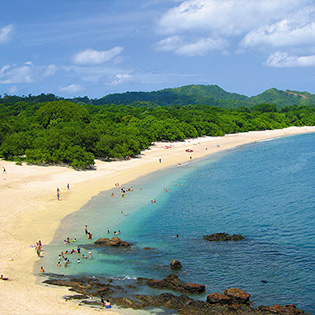

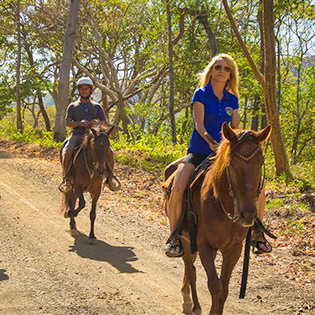

Overview
Guanacaste is Costa Rica’s largest, most visited province. The region is mainly known for more than 100 Pacific beaches, and expansive savannahs, where herds of cattle and cowboys are frequently sighted. To the north, near the Nicaraguan border, Rincon de la Vieja National Park offers excellent volcano trekking, natural hot springs and popular canopy tours. Tamarindo is the Guanacaste’s most popular coastal town, although many small fishing villages are now booming with the construction of numerous hotels and resorts. Liberia International Airport is fast becoming the province’s main port of entry. Small airstrips in Tamarindo, Carrillo, Samara and Tambor also offer daily flights to and from San Jose.
Recommended Stay
Three to five nights
When to go
Best time to visit is dry season (November-May), when days are clear and sunny and rain practically non-existent. Day temperatures average 85°F dropping into the 70s at night. Wet season is characterized by higher temperatures and humidity with clear mornings, and heavy downpours occurring mostly in the afternoons.
Highlights
Tortuguero National Park
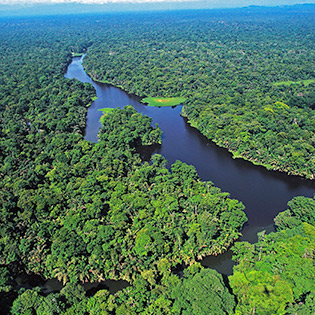
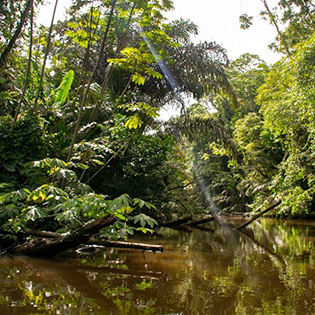
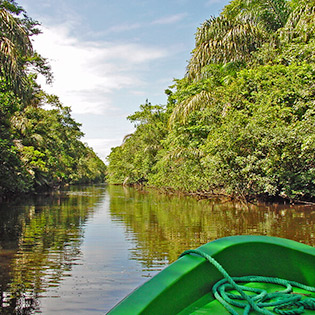

Overview
Located on Costa Rica’s northeast Caribbean coast, Tortuguero is a thick tropical forest crisscrossed by countless rivers and man-made canals, one of the last large areas of tropical rain forest in Central America this is home to a robust wildlife including monkeys, jaguars, tapir, crocodiles, red frogs, and many tropical birds. The coast is lined with long, sandy beaches excellent for long walks (but not suitable for swimming due to strong currents and sharks). Every year large groups of Green (Jun-Oct) and, to a lesser extent, Leatherback (Feb-Jul) and Hawksbill (Jul) Turtles lay eggs on these beaches, making Tortuguero one of the western Caribbean’s most important nesting sites. There are no roads in Tortuguero. All transportation is made on canoes along jungle canals. Accommodations are provided in simple lodges. A small airstrip offers daily flights to and from San Jose.
Recommended Stay
One or two nights
When to go
Rain falls year ‘round (mostly afternoons) with January, June and July the wettest months. February, April and November are the driest months although storms can lash the region at any time. During jungle treks expect hot, very humid and windless conditions although you might need a windbreaker when speeding upriver under cloudy skies.
Highlights
Manuel Antonio National Park
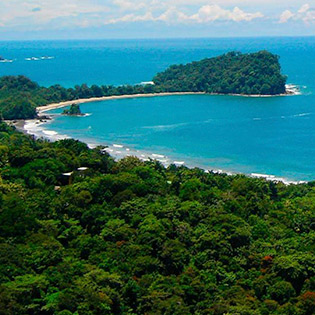
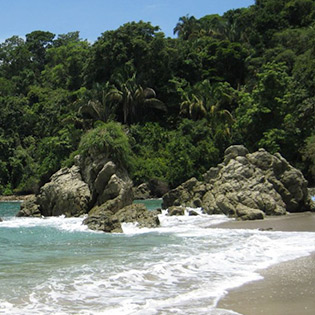
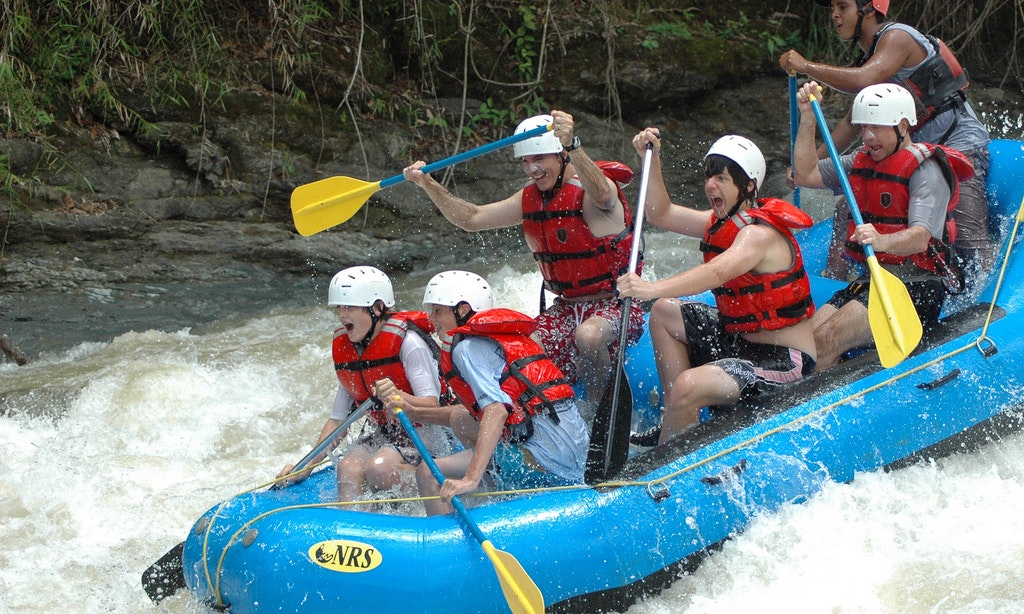

Overview
Manuel Antonio National Park, one of the most beautiful parks in Costa Rica, a charming combination of rain forest, beaches and coral reefs, and therefore the ideal Costa Rica vacation. The region is one of the most beautiful in the country because it is carpeted with lush forest that ends on the beach line. The park is within easy reach the town of Quepos, and offers a good selection of hotels and restaurants. Visiting the park, one is treated to an abundant diversity of wildlife. Here you can hike well-maintained trails observing interesting tree species, watch howler monkeys, marmosets, ocelots, toucans, macaws and other wildlife; then swim and snorkel in two of Costa Rica’s most celebrated beaches. The southern facing beach, Playa Manuel Antonio, is a picturesque half mile long, white sand crescent bisecting deep green foliage to one side and a private, secluded cove to the other. Manuel Antonio offers you a diverse range of fun activities associated with Costa Rica, from zip lining, to boating, horseback riding, ATV Adventure and much more.
Recommended Stay
Three to five nights
When to go
Best time to visit is dry season (December-May), when days are clear and sunny, and rain is practically non-existent. Day temperatures average 80F dropping into the 70s at night. Wet season is characterized by higher temperatures and humidity, clear mornings and heavy afternoon downpours.
Highlights
Monteverde Cloud Forest
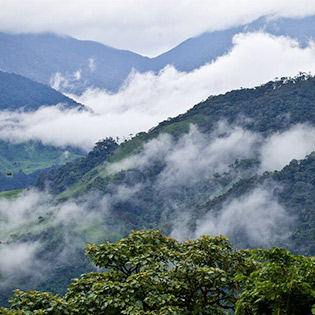

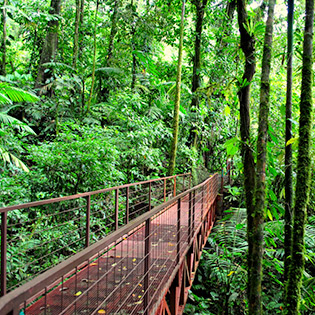
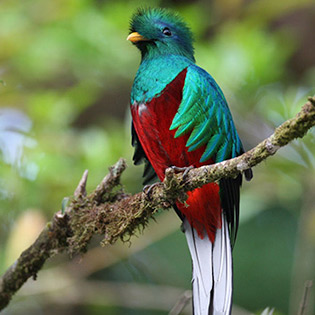
Overview
The Monteverde Cloud Forest Reserve is a Costa Rican reserve located along the Cordillera de Tilarán within the Puntarenas and Alajuela provinces. Straddling the Continental Divide at 4,662 ft. above sea level, Monteverde may not be your image of the tropics: Here mist produced by constant hovering clouds and cool temperatures create the perfect environment for a lush cloud forest, where hundreds of bird and mammal species and thousands of insects and plants thrive. Monteverde was originally founded by American Quakers who purchased land to protect the area watershed, built a cheese factory (now a popular visitor attraction), and still hold silent meetings open to the public. Extending across eight distinct biological zones, the Monteverde Cloud Forest Reserve is home to more than thousands of species of plants and animals. Look upwards towards the top of the giant trees where more than 500 species of birds live. The most popular birds in this region are the elusive quetzal and the three-wattled bellbird. Discover the flora and fauna, including jaguars, toucanets, pumas, monkeys and the red-eyed tree frogs that have come to serve as the poster-animal for Costa Rica! There are also 420 species of orchids and 200 species of ferns. When exploring the forest you will be sure to encounter a variety of these spectacular wildlife. You might even catch a glimpse at the golden toad, a toad species only known to exist here in the Monteverde Cloud Forest Reserve.
Recommended Stay
Two to three nights
When to go
Although Monteverde follows the dry/wet season pattern, its climate is extremely unpredictable with changing constantly conditions mainly due to trade winds. It is not uncommon to see wet conditions even during dry season (December-April) so packing a raincoat or umbrella is always a good idea. Mild temperatures year ‘round range between 55 and 70F.
Highlights
Osa Peninsula
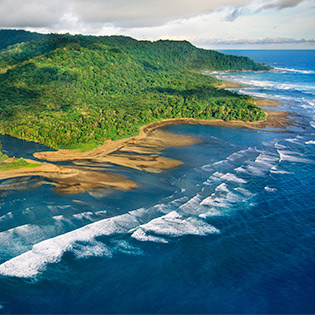
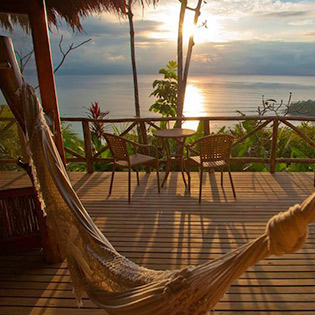
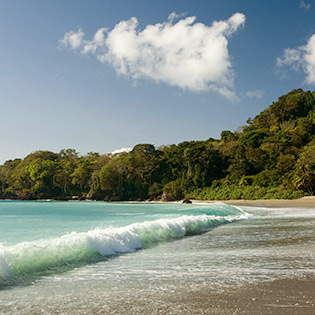
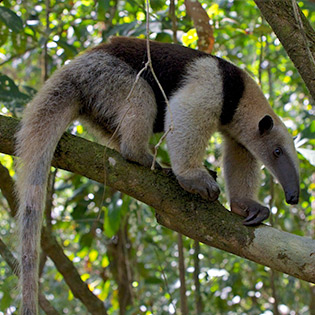
Overview
The wild, remote Osa Peninsula is situated on Southern Pacific Coast of Costa Rica just north of Panama. The saving grace for this region is it’s remote and difficult to get to geographical location. This is a world premier rainforest destination dubbed one of the most biologically intense places on earth by National Geographic. The pristine peninsula is bound on the northwest by Drake Bay, on the west by the Pacific Ocean, and on the east by the Golfo Dulce. The Osa Peninsula offers breathtaking, untouched scenery, secluded beaches, and abundant wildlife encompassing lush primary rainforest and a complex system of freshwater and marine resources. This is home of Corcovado National Park, a large protected area sheltering diverse wildlife including tapir, jaguar, four types of monkeys, more than 375 tropical bird species including scarlet macaws and harpy eagles, and three sea turtle species who nest on its deserted beaches. Offshore Caño Island, also within the park, has a surrounding marine reserve excellent for snorkeling, and watching dolphins and often humpback whales.
Recommended Stay
Three to five nights
When to go
Best time to visit is dry season (December-May), when days are clear and sunny and rain less intense. Wet season is characterized by higher temperatures and humidity, and continuous rains. Not advisable to visit in September and October when rains can become torrential.
Highlights
Caribbean Coast
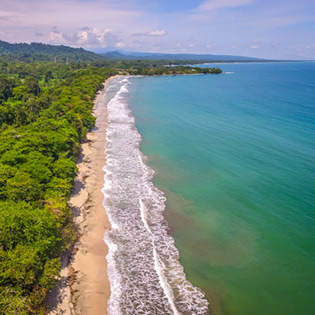
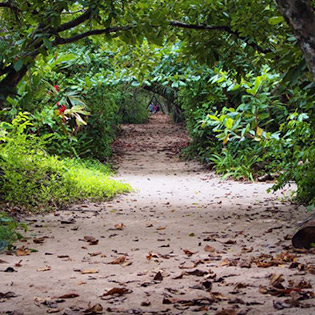
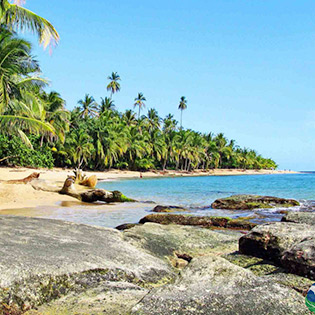
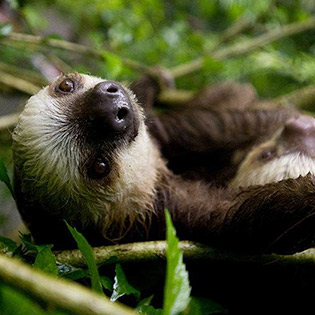
Overview
Costa Rica’s Caribbean shoreline tends to be one of the underappreciated attractions in the country. Many Costa Ricans don’t bother coming here. Like elsewhere in the Caribbean, this coast is super laid-back, temperate, and teeming with wildlife. Activities, lodging, and just about everything else are cheaper here than on the more highfalutin Pacific side. Whether it’s a remote turtle sanctuary, a tour of an old cacao farm or a wild all-night party that a traveler seeks, the Caribbean comes through. And in a country known for uninspired fare, the Caribbean side is the big exception: think whole fried snapper with a side of coconut rice and fried plantains, washed down with delicious ginger juice. Pura vida, mae. The province of Limon runs 125 miles (200 km), from the northern Nicaraguan border to the southern border with Panama offering alluring southern beaches with an easy Caribbean vibe. With a mesh of Tico and Afro-Caribbean culture, Limon Province displays a unique side of Costa Rica. The Southern Caribbean coast missed the boom of tourist development that has happened elsewhere in Costa Rica and thus remain a pristine, off the beaten path destination with a unique culture of its own.
Recommended Stay
Two to four nights
When to go
This is a year-round destination. It rains less than in the north; Dry- January to May, Driest- September and October; Wettest- November and December, June and July. Average Temperature is high of 87°

